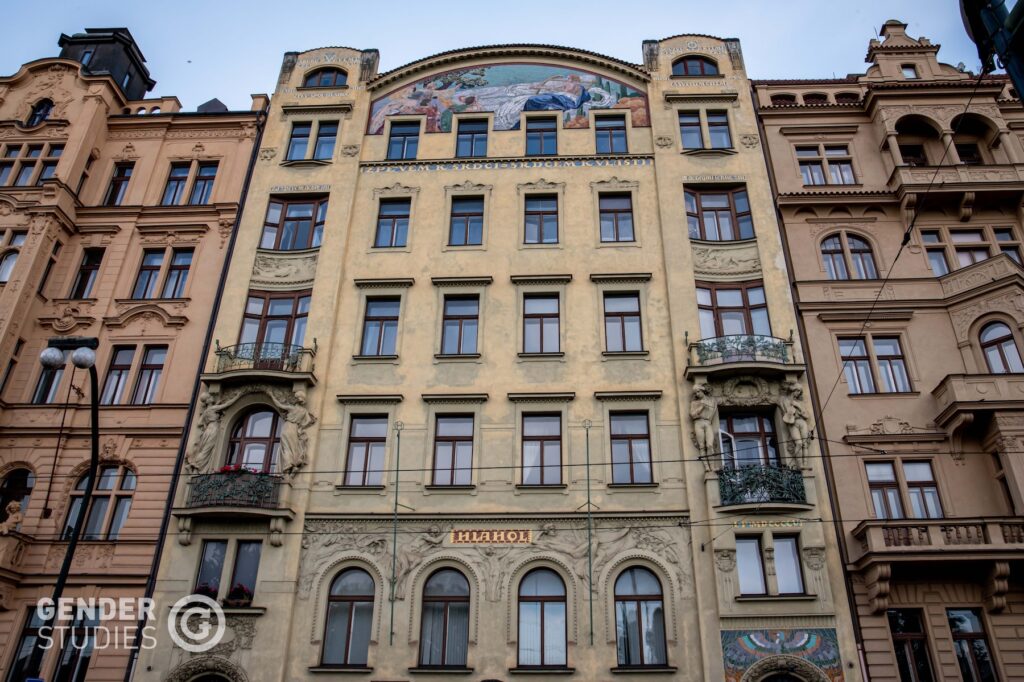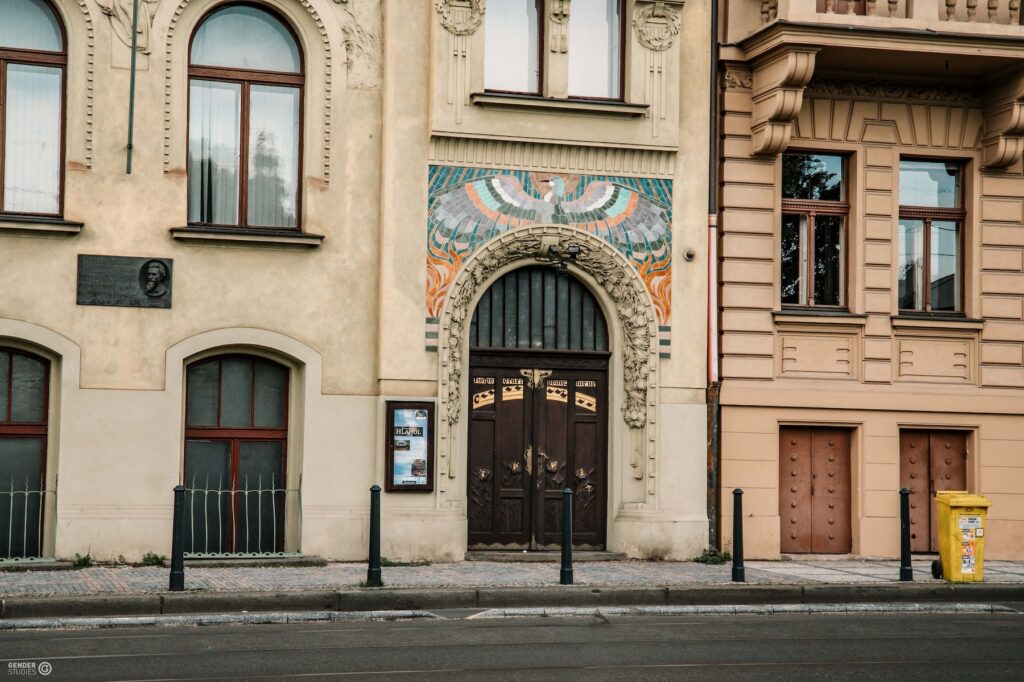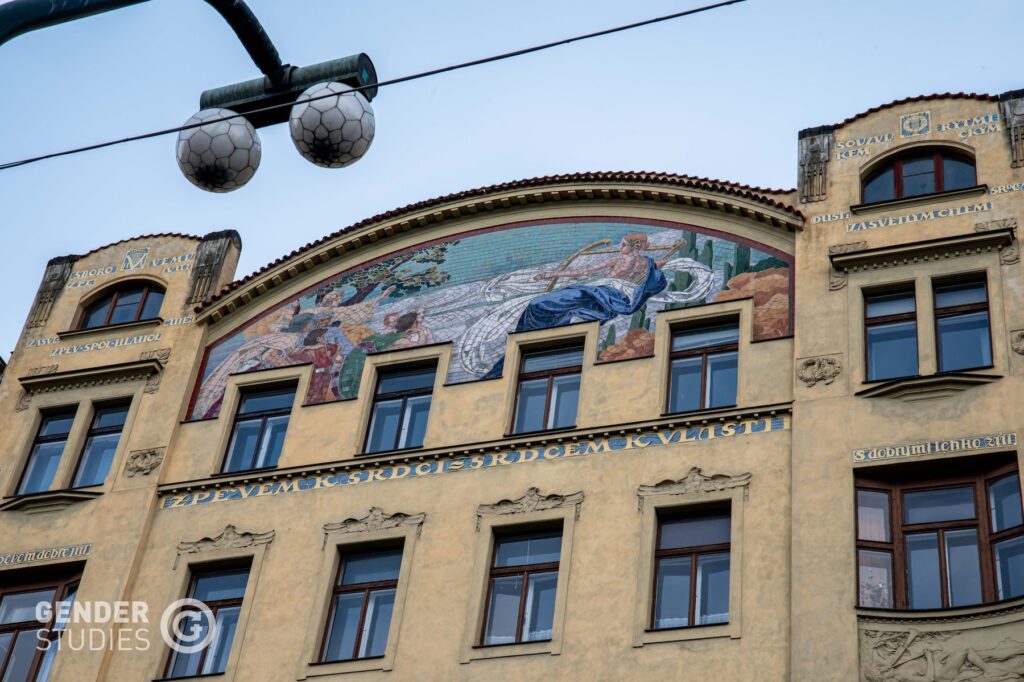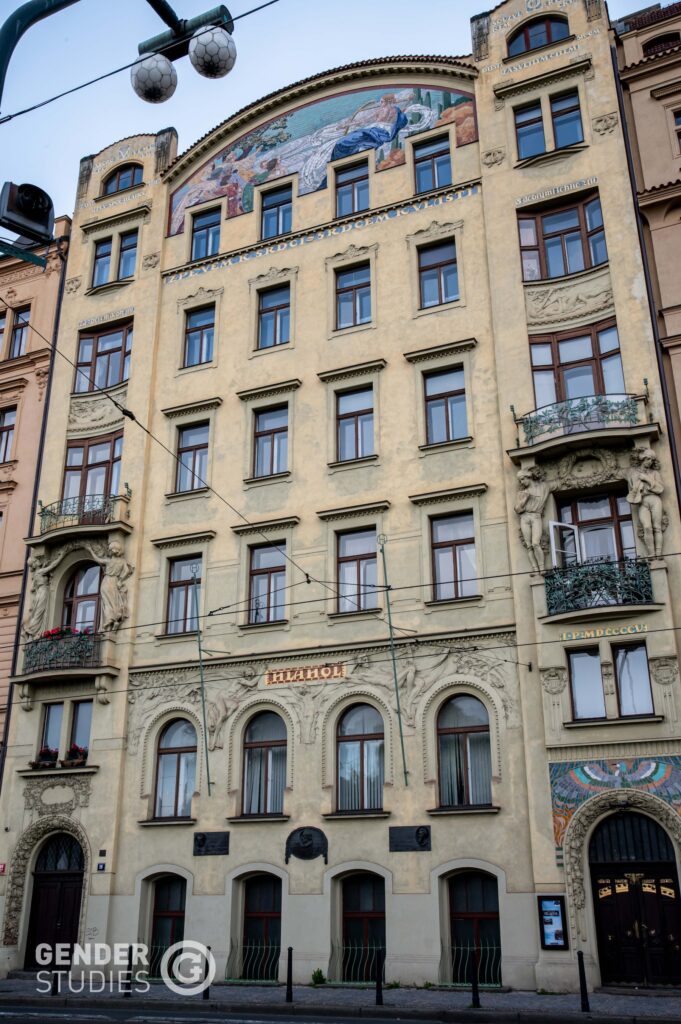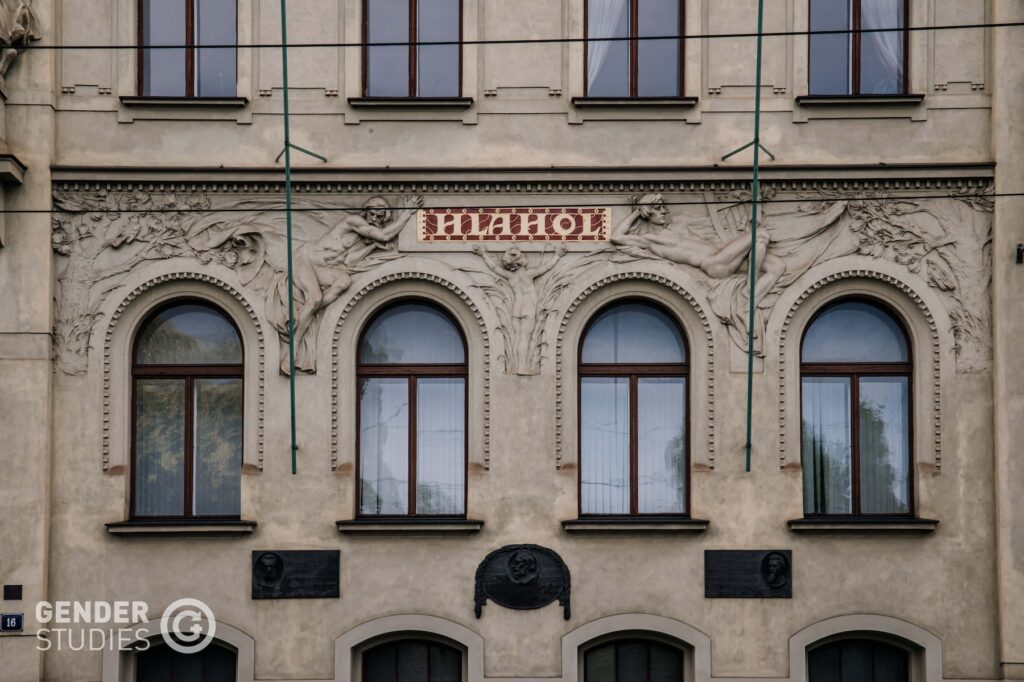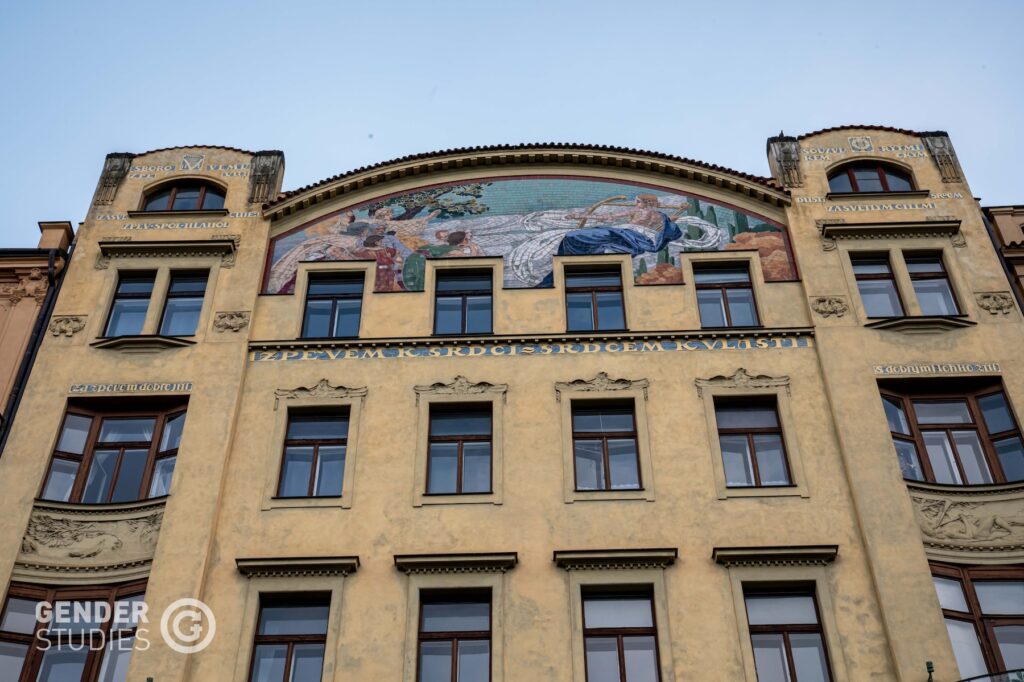Hlahol Union Building
The building played an important role in feminist history because it hosted the first activist meeting of the Czech women’s movement. The meeting was presided by Karla Máchová, Czech writer, translator, politician, and editor of the Brno-based magazine, Ženský list (Women’s Paper). This was first-ever event organized in Prague on International Women’s Day (then held primarily to promote women’s suffrage).
The building provided rental apartments as well as the seat of the Hlahol Union. Commissioned by Hlahol, it was designed by Josef Fanta and František Schlaffner (first design) and constructed in 1904–1905. It stretches across an entire urban block, facing both the embankment (Masarykovo nábřeží) and Vojtěšská Street. The site was originally occupied by two small blocks between the river and a predecessor of Vojtěšská Street. The building’s valuable Art Nouveau decorations were created by Alfons Mucha, Karel Ludvík Klusáček (allegory of Music – segmental pediment, sgraffiti), Josef Pekárek (sculptural decorations of the front, sculpture on the top of the pediment), Karel Mottl (ornamental decorations), and others. The main hall features a glass ceiling with unique chandeliers, busts of Hlahol’s significant members (conductors), and a lunette painted by Alfons Mucha and named “Czech Song”. The union’s museum is found on the second floor.
The singing union Hlahol was founded in 1861 in Prague by the local conductor, singer, and brewer Jan Ludvík Lukes. It started as a 120-member male choir. A female choir was added in 1873. Eliška Krásnohorská was one of its members. The union relocated to the new building at the embankment (Masarykovo nábřeží 16) in 1905. Its motto, “Sing to reach the heart, the heart will reach the homeland”, was painted on the union’s flag by Josef Mánes. In addition to concerts, the choir performed at the unveiling of monuments dedicated to important leaders, funerals, or at the National Theatre’s foundation stone laying ceremony. In the interwar period, famous actresses Adina Mandlová and Hana Vítová lived in the Hlahol Building. During WWII, Hlahol’s premises were confiscated and assigned to the German engineering organization Todt, Einsatzgruppe VII. Hlahol was temporarily relocated to a building in Štěpánská Street. In January 1945, the choir started rehearsing back in the Hlahol Building, yet in April, the hall and the wardrobe were again confiscated for flour storage. It was only after the end of the war that the union could make use of its seat again. Hlahol’s mixed choir exists to present day.

